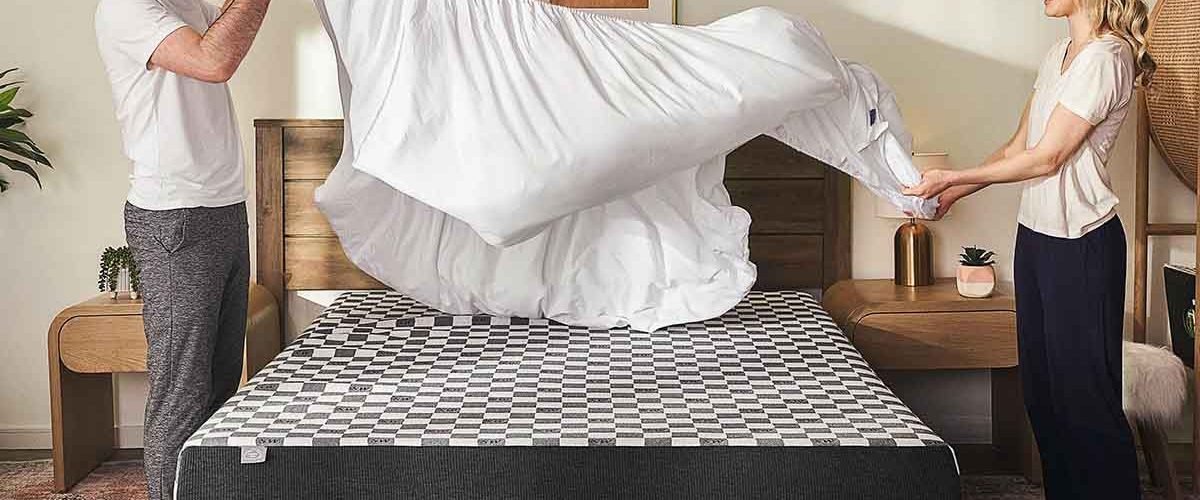Table of Contents
Introduction
A memory foam mattress is a popular choice for its comfort and support. However, to ensure its longevity and maintain a healthy sleeping environment, regular cleaning and maintenance are essential. In this comprehensive guide, we will walk you through the step-by-step process of cleaning and maintaining your memory foam mattress. We will cover everything from vacuuming and spot cleaning to drying and preventing stains. By following these tips, you can keep your mattress fresh, odor-free, and in great condition for years to come.
Section 1: Clean Your Mattress with a Vacuum
Step 1: Remove Bedding and Pre-Clean
Before you begin cleaning your memory foam mattress, remove all bedding, including sheets, pillowcases, and mattress protectors. This will allow you to access the mattress surface more effectively.
Next, pre-clean your mattress by sprinkling a thin layer of baking soda over the entire surface. Baking soda helps to absorb odors and moisture trapped within the foam.
Step 2: Vacuum the Mattress
Using a vacuum cleaner with a brush attachment, gently vacuum the entire surface of the mattress. This will remove dust, dirt, and any loose particles that have accumulated over time. Pay close attention to the seams and crevices where debris tends to accumulate.
Step 3: Deodorize with Baking Soda
After vacuuming, leave the baking soda on the mattress for at least 30 minutes or overnight if possible. Baking soda acts as a natural deodorizer and helps to eliminate any lingering odors. Finally, vacuum the mattress once again to remove the baking soda residue.
Section 2: Make a Homemade Memory Foam Cleaning Solution
Step 1: Gather Your Ingredients
To create a homemade cleaning solution for your memory foam mattress, you will need a few simple ingredients:
- Mild dishwashing soap or laundry detergent
- Warm water
- Spray bottle
Step 2: Mix the Cleaning Solution
In a spray bottle, combine one part mild dishwashing soap or laundry detergent with two parts warm water. Shake the bottle gently to mix the solution.
Section 3: Spot Clean Stains on Your Memory Foam Mattress
Step 1: Identify the Stain
Before attempting to remove a stain, it’s important to identify the type of stain you are dealing with. Different stains may require different cleaning methods. Common types of stains on memory foam mattresses include:
- Urine
- Blood
- Sweat
- Food and beverage spills
Step 2: Treat the Stain
Once you have identified the stain, spray a small amount of the homemade cleaning solution onto the stained area. Avoid saturating the mattress as excessive moisture can damage the foam.
Using a clean cloth or sponge, gently blot the stained area. Avoid scrubbing as this can push the stain deeper into the mattress. Continue blotting until the stain begins to lift.
Step 3: Rinse and Dry
After treating the stain, dampen a clean cloth with plain water and gently blot the area to remove any soapy residue. Then, allow the mattress to air dry completely before replacing the bedding. It is important to ensure that the mattress is completely dry to prevent the growth of mold and mildew.
Section 4: Dry Your Memory Foam Mattress
Step 1: Air Dry
To dry your memory foam mattress, place it in a well-ventilated area with good air circulation. Avoid direct sunlight as it can cause the foam to deteriorate over time. You can also use a fan or open windows to enhance air circulation and speed up the drying process.
Step 2: Use a Hair Dryer (Optional)
If you need to speed up the drying process, you can use a hair dryer on the lowest heat setting. Hold the hair dryer several inches away from the mattress and move it in a gentle, sweeping motion. Be cautious not to apply too much heat as it can damage the foam.
Section 5: Tips for Maintaining a Clean Memory Foam Mattress
Tip 1: Use a Mattress Protector
To prevent stains and spills from reaching your memory foam mattress, invest in a quality mattress protector. A mattress protector acts as a barrier, shielding your mattress from dust, dirt, allergens, and fluids. It is also easier to clean a mattress protector than the mattress itself.
Tip 2: Rotate Your Mattress
To ensure even wear and minimize the risk of sagging, it is recommended to rotate your memory foam mattress every three to six months. This will distribute the weight more evenly and extend the lifespan of your mattress.
Tip 3: Clean Spills and Stains Immediately
Promptly addressing spills and stains is crucial to prevent them from setting into the foam and becoming more challenging to remove. As soon as you notice a spill or stain, follow the spot cleaning steps outlined earlier in this guide.
Tip 4: Vacuum Regularly
Regular vacuuming is essential to remove dust, dirt, and allergens that accumulate on the surface of your mattress. Aim to vacuum your memory foam mattress at least once a month, or more frequently if you have allergies or pets.
Tip 5: Avoid Jumping or Standing on the Mattress
Excessive weight or pressure can damage the structure and integrity of your memory foam mattress. Avoid jumping or standing on the mattress as it can cause sagging, indentations, or even tears in the foam.
Section 6: When Is It Time to Call Professionals?
In most cases, regular cleaning and maintenance can keep your memory foam mattress in excellent condition. However, there may be instances where professional cleaning is necessary. Consider contacting professionals if:
- The mattress has significant stains or odors that cannot be removed with DIY methods.
- You are unsure about the appropriate cleaning method for a specific stain or material.
- The mattress has been exposed to mold or mildew, requiring specialized treatment.
Section 7: When Is a Mattress Beyond Cleaning?
While regular cleaning can help maintain the hygiene and lifespan of your memory foam mattress, there comes a time when it may be beyond cleaning. Signs that your mattress may need to be replaced include:
- Excessive sagging or permanent indentations that affect comfort and support.
- Visible signs of wear and tear, such as torn or frayed fabric.
- Persistent odors that cannot be eliminated.
- Allergies or respiratory issues that worsen despite regular cleaning and maintenance.
Section 8: Frequently Asked Questions
- Can I use bleach to clean my memory foam mattress?
No, bleach should not be used on memory foam mattresses as it can damage the foam and discolor the fabric. Stick to mild detergents or soaps. - How often should I clean my memory foam mattress?
It is recommended to clean your memory foam mattress at least twice a year. However, spot cleaning spills and stains should be done immediately. - Can I steam clean my memory foam mattress?
Steam cleaning is not recommended for memory foam mattresses as it can introduce excessive moisture, which can lead to mold and mildew growth. - Can I use baking soda to remove odors from my memory foam mattress?
Yes, baking soda is an effective natural deodorizer. Sprinkle a thin layer of baking soda over the mattress surface, let it sit for a few hours, then vacuum it up.
Conclusion
Cleaning and maintaining your memory foam mattress is crucial for its longevity and your sleep hygiene. By following the steps outlined in this guide, you can keep your mattress fresh, odor-free, and in great condition. Remember to vacuum regularly, address spills and stains promptly, and use a mattress protector for added protection. With proper care, your memory foam mattress will continue to provide you with a restful and comfortable sleep for years to come.





